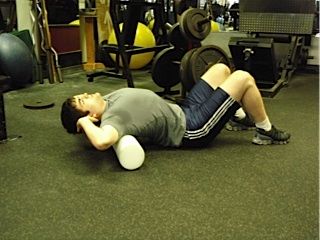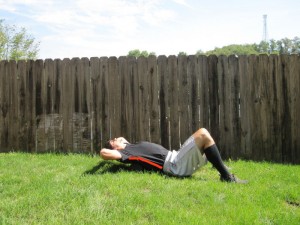In a few weeks, the culture of this website is going to change. I’m going to become less “end result” oriented, and more “process” oriented. I’m working on a fancy “about” page to explain just exactly what that means, but the shortened version is that the internet is filled with people that spout the end [...]
In a few weeks, the culture of this website is going to change. I’m going to become less “end result” oriented, and more “process” oriented. I’m working on a fancy “about” page to explain just exactly what that means, but the shortened version is that the internet is filled with people that spout the end result. Internet ads say, “I made $1,000,000 in ten seconds. Click here to find out how!” That’s end result thinking. If the link said, “Click here to see how I’m trying to make $1,000,000 in ten seconds,” it becomes process thinking.
Most of my articles are end result articles. Here’s how to do X. Do this to accomplish Y. And that’s fine, as end result articles have their place and will always appear on this website. Of course, I’ll continue to find and expand on topics I feel aren’t covered enough, such as skinny fact ectomorph training. For those of you interested in that, you’ll be happy to know I’m in the midst of writing something huge for you. Starting today, I’m going to start being more process-oriented.
WHAT A REJECTED ARTICLE LOOKS LIKE
Some of my readers have aspirations to write for fitness, strength, and health magazines just as I once did before I broke through last October. One of the problems is that, as a beginner writer, you only see finished products. Not every idea that slips into the crevice of your brain’s neurons makes the cut. Behind the scenes, a lot goes on. Sometimes editors guide writing in directions against intention. Other times, the article is flat out rejected as magazines have certain criteria and brands they upkeep and abide by. So regardless of how well you think a piece is written, or how fitting you think a topic is, you might want to hold your breath.
I submitted this piece to a publisher months ago. It was rejected. Looking back, I know why. I’d do a lot of things differently, but I’ll save that critique and insight for another blog post (which, by the way, is a great process oriented topic). Until then, why do you think it was rejected? Did I leave spelling errors in the draft? Is it a bad topic? Is it boring? Drop your comments at the bottom of the page.
Your Lumbar Spine and Its Effect on Mobility
By Anthony Mychal
I’m debating what’s worse: the process of getting whiplash, or driving home after getting whiplash. On one hand, getting your neck abused like a PEZ dispenser is traumatizing. But it’s over before you realize it started.
On the other hand, the drive home is brutal. You don’t change lanes because you can’t turn your head. Your life suddenly depends on peripheral vision. What are you? A horse? And then comes the dire times in which you actually need to see if you’re going to end your life by colliding into a passing car. You can’t trust your rearview mirror because of the blind spot. Since your neck is useless, your rotation comes from the spine, aided by your suicide grip on the steering wheel.
But this is all evidence. Evidence in favor of those that say: “the body doesn’t move in isolation.” No kidding. But it’s also a testament to the body’s resiliency. So your neck is broke. What are you going to do? Die? You’ll find a way to survive. Or, at the very least, try to.
Compensations like these are prevalent throughout your body, but they aren’t necessarily a “good thing.” Deep down, your motivation is survival. Your physiology doesn’t care about chronic pain or nagging injuries as long as the heart is still beating.
Most muscular problems stem from the center of your body because of how important it is. “As athletes advance,” Bret Contreras writes in a recent blog post, “they learn to incorporate their hip and leg musculature into their movements to a much higher degree.”
And for good reason. The pelvis has some of the strongest and largest muscles attaching on and originating from it. The hips control the lower limbs so to speak, just as the shoulders control the upper limbs. These two areas can tell you a lot about how a person functions.
But they aren’t mutually exclusive. As Eric Cressey has pointed out before, stiff hips can lead to a stiff thoracic spine, which can throw off the shoulders and neck. And if the shoulders and neck are struggling, how do you think the elbows and wrists will fare? It’s this crazy stuff that really shows just how far compensations can root.
THE MISSING LINK
Now I’m not one of those guys that blames discomfort in the pinky finger on the hip rotators. All I’m saying is that you need to keep the hips and shoulders clean because they have the most responsibility. They’re like babysitters in charge of ten newborns. If they can’t stop one baby from crying, then there’s a good chance all of the babies will start crying—and the babysitter won’t be too far behind.
Keeping the shoulders and hips clean sounds easy, and eager souls will rush into mobility drills. Since more is better, they’ll hit their furthest range of motion with no regard for the body as a system of moving parts. And in order to get the most out of our mobility drills we have to consider what’s in the middle of the shoulders and hips: the lumbar spine.
It’s well known—especially with the surge of pallof presses, planks, and their respective variations—that, in most situations, the lumbar spine is a transmitter and not a producer of force. And when transmitting, tighter is better.
What’s not well known is that the lumbar spine can also be a crux in your mobility work. You can be doing drill after drill, but unless you have control of your lumbar spine, their effects will be moot.
Aside from the shoulders and hips having a large list of responsibilities, they are also at the mercy of our bad habits like sitting too damn much and carrying ourselves with bad posture. We know this though, so we’re smart enough to stretch our hip flexors and get in our thoracic extensions. But any corrective exercise you can dream of will fall short if the lumbar spine is doing the mobilizing. So let’s take a look at both of these movements and see how we can make sure they’re actually doing what we want them to do.
THORACIC EXTENSIONS
If there’s one thing I have learned about thoracic extensions, it’s that everyone hinges from the lower back unless told otherwise. This happens for two reasons.
The first reason is because of the range of motion obsession, as stated earlier. When you get that foam roller under your shoulder blades, the only thing you care about is rounding over so that your head touches the ground. Wrong.
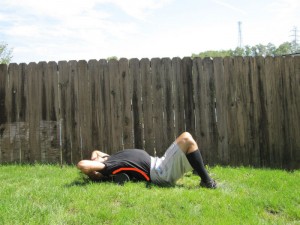
If you’re doing them “right” your head isn’t going to touch the ground because the thoracic spine doesn’t have much extension range of motion.
The second reason is because it “hurts” a little when you do it right, and most people are afraid of pushing comfort zones. Undoing years of hunching, sitting, and bad posture doesn’t feel normal, so don’t expect it to at first.
But the fix is easy, and it starts with your set up. Instead of arching your back in the start position, engage your abs a bit as if you were doing a crunch, and keep this contraction throughout the entire range of motion.
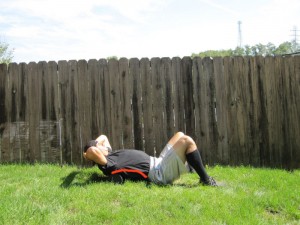
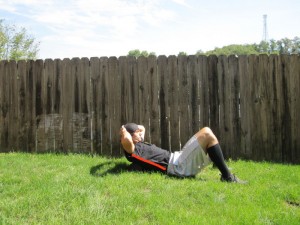
Next, instead of reaching for the ground, fold from the thoracic spine and “feel” the movement in the middle of your back.
Trying to teach this to a group of thirty teenagers at once leads to thirty teenagers doing it wrong. But it only takes a few punches to the stomach before they start to do it “right.” Then, with a little practice, something even crazier happens. They “feel” the lower traps and rhomboids contracting against the foam roller. And I don’t see how that could be a bad thing.
HIP FLEXOR STRETCHING
I blame the hip flexor misconceptions on the front splits. Everyone is obsessed with going as deep as possible, with no regard for actually, uh, feeling a stretch in the hip flexor. More range of motion is only better if you’re tapping into the right movement.
To me, a deep lunge doesn’t represent a flexible hip flexor, it represents a flexible lower back. But to understand why, you have to understand pelvic positioning and the resultant angle of hip extension. (In the pictures, the yellow line represents the pelvic plane, and the red line represents angle of hip extension.)
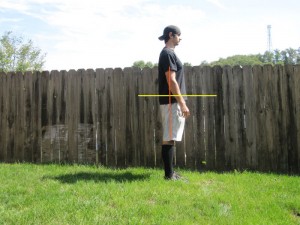
When standing up, with your back in a neutral position, the angle of hip extension from the pelvic plane is 90°. Holding in neutral, you can only extend your hip 10° to 20°. This range of motion, however, is all hyperextension. So in order to qualify as hyper extension, the angle of hip extension from the pelvic plane has to be greater than 90°.
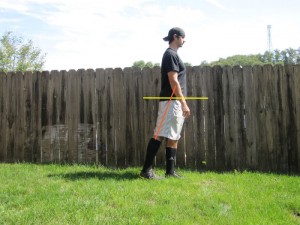
If you assume an anterior pelvic tilt, the initial angle closes to 70° to 80° (as oppsed to the 90° in neutral). Extending your hip from this position makes it appear as if you’re getting more hip extension, but you’re not. You’re getting the same amount, if not less, because you have to cover the 10° to 20° lost from the anterior pelvic tilt.
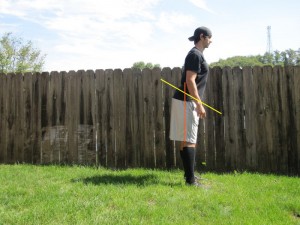
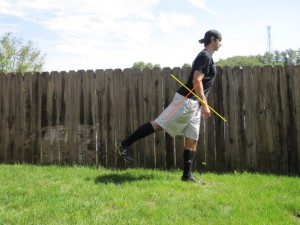
In theory, the fix looks similar to what was done at the thoracic spine—don’t care so much about range of motion and tighten the abs—but it’s more difficult to execute.
First, abandon your old hip flexor stretch that probably looks something like the picture below.
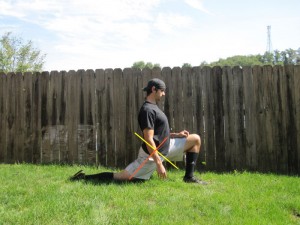
Although the deep lunge position makes it appear as if the hip flexor is being stretched, it really isn’t because the angle of hip extension from the pelvic plane is near 90°. Remember that hyperextension happens at an angle greater than 90°, so with the deep lunge you’re barely stretching the hip flexor beyond its length in a normal standing position.
To correct this, squeeze the glute of the rear leg and “push” the front of hip forward while tightening the abs a little. Cue yourself to rip the hip flexor from the bone. (It was a saying I learned from Buddy Morris, and it works well.)
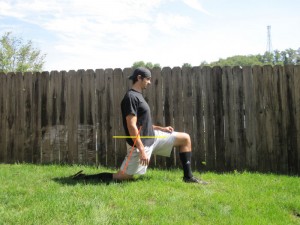
If you’re having trouble tilting your pelvis, practice “nerd posture.” Stand up, squeeze the glutes, and then tilt your pelvis and body as if you did nothing but play Call of Duty all day.
Get back into the lunge position, squeeze the glute of the rear leg, and assume nerd posture at the hip. It’s challenging at first because the lead leg actually pulls on the ground with the hamstring, like a leg curl, for leverage when tilting the pelvis upward.
Once you settle into this position, you won’t be in nearly as deep of a lunge, but you will feel your hip flexor being stretched much more because you’re actually stretching into hip hyperextension.
LESSONS TO BE LEARNED
While compensations can happen in many movements, muscles, and motor patterns, it’s important keep the shoulders and hips clean. The information here extends beyond thoracic extensions and lunging hip flexor stretches. During any mobility or flexibility drill be it scapular wall slides, shoulder dislocates, or fire hydrants, consider the role of the lumbar spine. See if you’re really mobilizing, or if you just think you’re mobilizing. It’s more than going through the motions.
Don’t be upset if you’ve been doing things wrong. Remember, it’s these compensations that enable us to survive. Or, at the least, prevent automobile accidents.
References
Contreras, B. (2011, Sept 11). Standing rotary training is whole body training! [Web log message]. Retrieved from http://bretcontreras.com/2011/09/standing-rotary-training-is-whole-body-training/
Cressey, E. (2011, March 29). Oblique strains in baseball: 2011 update [Web log message]. Retrieved from http://ericcressey.com/oblique-strains-in-baseball-2011-update
